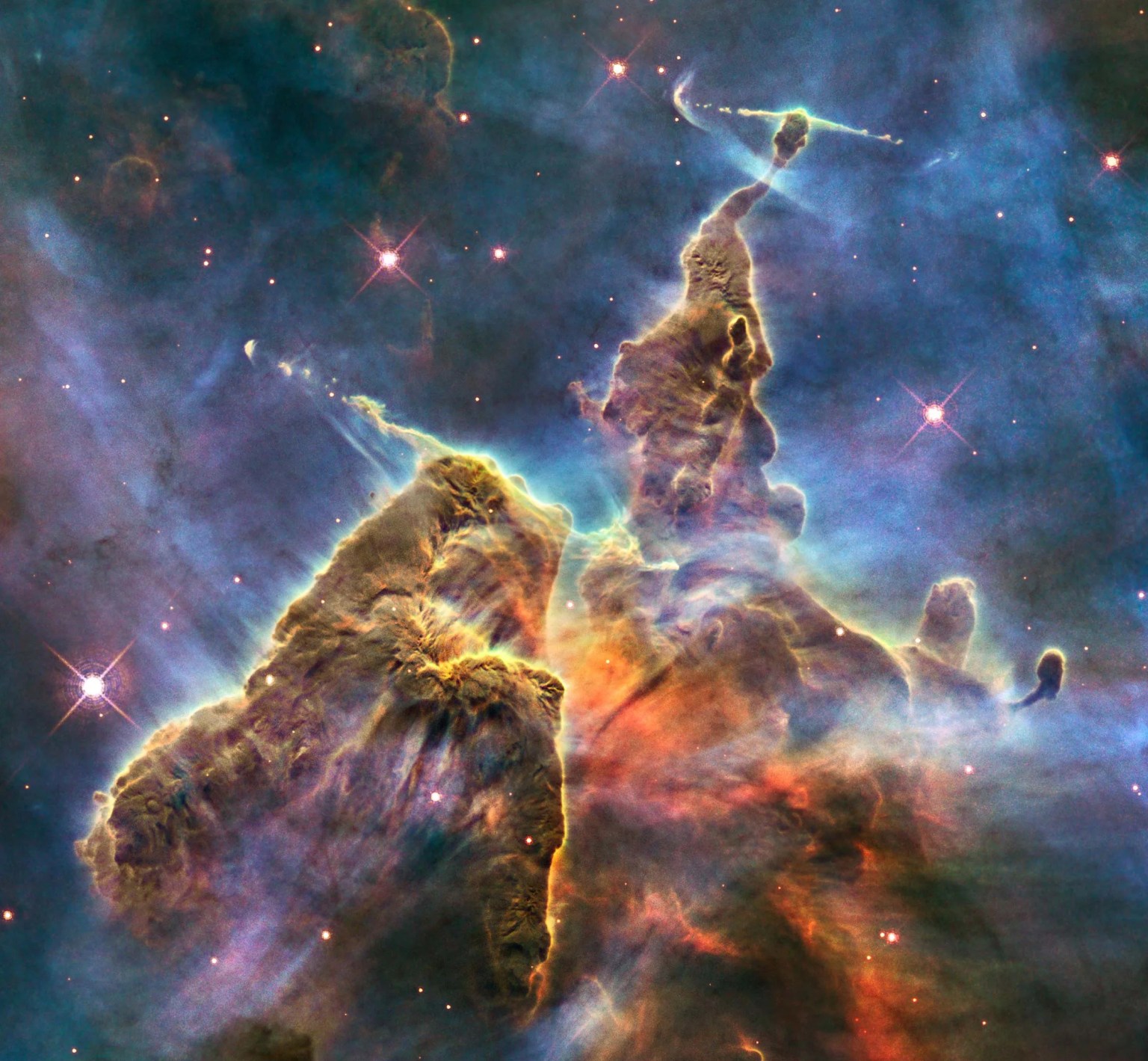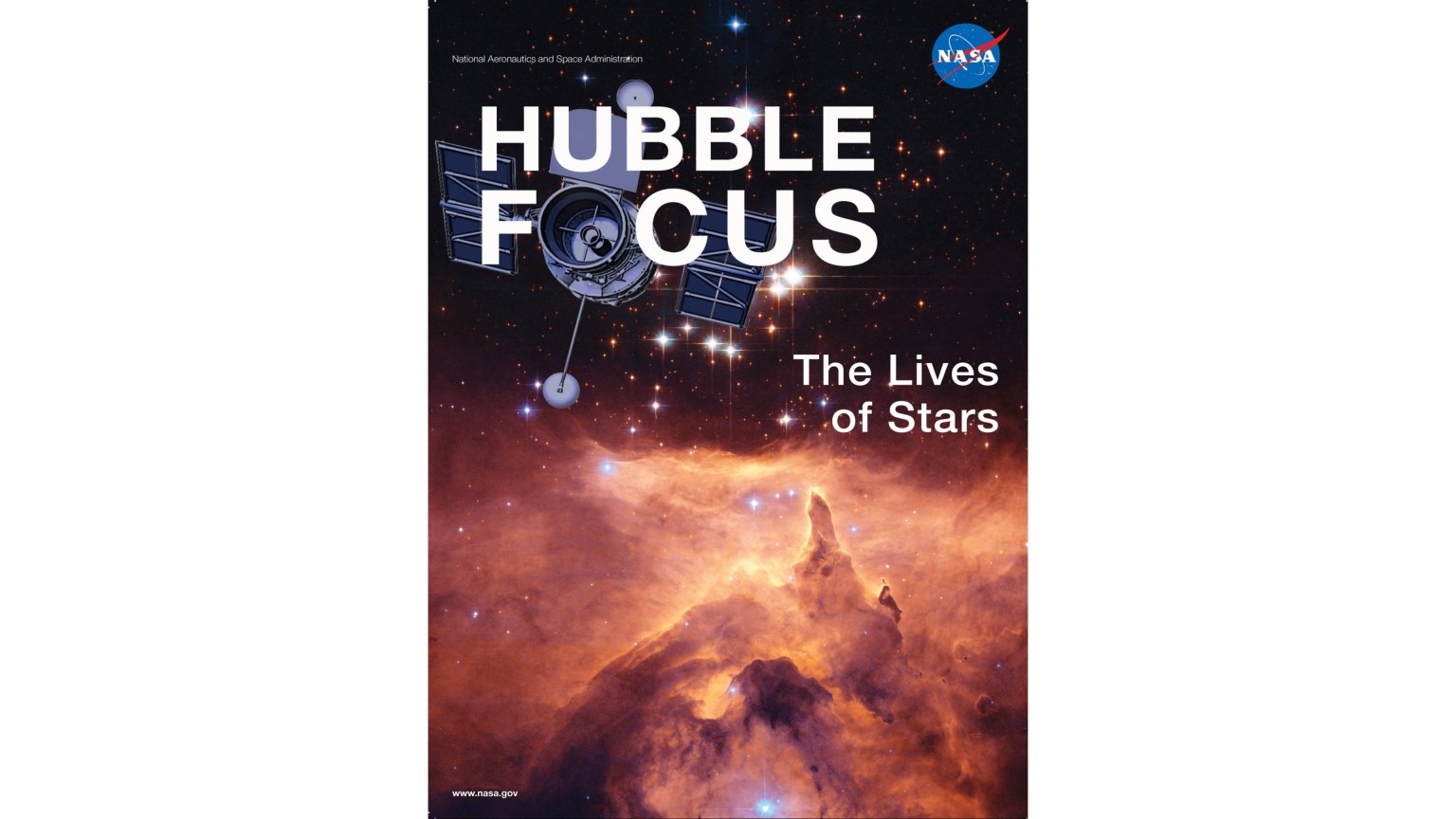2 min read
Hubble Captures Young Stars Changing Their Environments
This NASA/ESA Hubble Space Telescope image peers into the dusty recesses of the nearest massive star-forming region to Earth, the Orion Nebula (Messier 42, M42). Just 1,500 light-years away, the Orion Nebula is visible to the unaided eye below the three stars that form the ‘belt’ in the constellation Orion. The nebula is home to hundreds of newborn stars including the subject of this image: the protostars HOPS 150 and HOPS 153.
These protostars get their names from the Herschel Orion Protostar Survey, conducted with ESA’s Herschel Space Observatory. The object visible in the upper-right corner of this image is HOPS 150: it’s a binary star system where two young protostars orbit each other. Each star has a small, dusty disk of material surrounding it. These stars gather material from their respective dust disks, growing in the process. The dark line that cuts across the bright glow of these protostars is a cloud of gas and dust falling in on the pair of protostars. It is over 2,000 times wider than the distance between Earth and the Sun. Based on the amount of infrared light HOPS 150 is emitting, as compared to other wavelengths it emits, the protostars are mid-way down the path to becoming mature stars.
Extending across the left side of the image is a narrow, colorful outflow called a jet. This jet comes from the nearby protostar HOPS 153, which is out of the frame. HOPS 153 is significantly younger than its neighbor. That stellar object is still deeply embedded in its birth nebula and enshrouded by a cloud of cold, dense gas. While Hubble cannot penetrate this gas to see the protostar, the jet HOPS 153 emitted is brightly and clearly visible as it plows into the surrounding gas and dust of the Orion Nebula.
The transition from tightly swaddled protostar to fully fledged star will dramatically affect HOPS 153’s surroundings. As gas falls onto the protostar, its jets spew material and energy into interstellar space, carving out bubbles and heating the gas. By stirring up and warming nearby gas, HOPS 153 may regulate the formation of new stars in its neighborhood and even slow its own growth.
Explore More
Media Contact:
Claire Andreoli (claire.andreoli@nasa.gov)
NASA’s Goddard Space Flight Center, Greenbelt, MD




